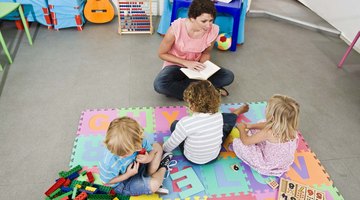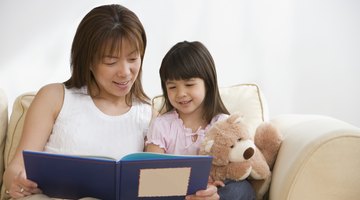Single-Parent Family Social Problems
Although single-parent households are now commonplace in the United States, there are still some stigmas associated with them. In a family where there is only one parent taking care of a child or multiple children, there is more pressure on the parent to find an acceptable balance between financial and child-rearing obligations. Depending on the circumstances surrounding these households, the imbalance sometimes leads to inadequate parenting and social problems for the children and parents.
Divorce
Single parents who have gone through a divorce have to adapt their lives to account for the likely drop in income, change in housing or neighborhood and reduction in available time to spend with children. As opposed to lifetime single parents, divorcees are not usually accustomed to meeting day-to-day demands alone, which often causes confusion for both parents and children. It is also common for newly divorced parents to increase their use of drugs or alcohol, which could lead to criminality, an unstable environment for children and legal problems.
Delinquency

What Are the Benefits of a Two-Parent Household?
Learn More
Children of single-parent households are more commonly involved in delinquent activities than those living in two-parent households. Research published in the “Journal of Research on Adolescence” by Cynthia Harper found that adolescent males who live in father-absent households are more at risk for delinquency and youth incarceration than those living in father-mother households.
Low Income
Households with only one employed parent are usually in a lower income bracket than those with two wage earners. Families who live in poverty or just above poverty level have fewer resources available to promote a healthy environment for children. Consequently, low-income families live in less-desirable neighborhoods than higher earners. These living arrangements are often characterized by violence, property crime and fewer educational opportunities. Children from low-income families are also more likely to quit school when they become old enough to get a full-time job and contribute financially to the family.
Other Factors

The Effects of a Single Parent Home on a Child's Behavior
Learn More
There are other factors that contribute to the social problems that occur in single-parent households. When a parent has been incarcerated, for example, the remaining parent and children are left to adjust to the changes associated with jail time, which can include:
- social exclusion
- lower income
- prison visitations
- overall confusion
When a single parent or both parents are incarcerated, children are placed with family members or in foster care, making life even more unstable. Child neglect is also more frequent when there is only one parent present in the home. This contributes to emotional and psychological issues in children throughout adolescence and into adulthood.











